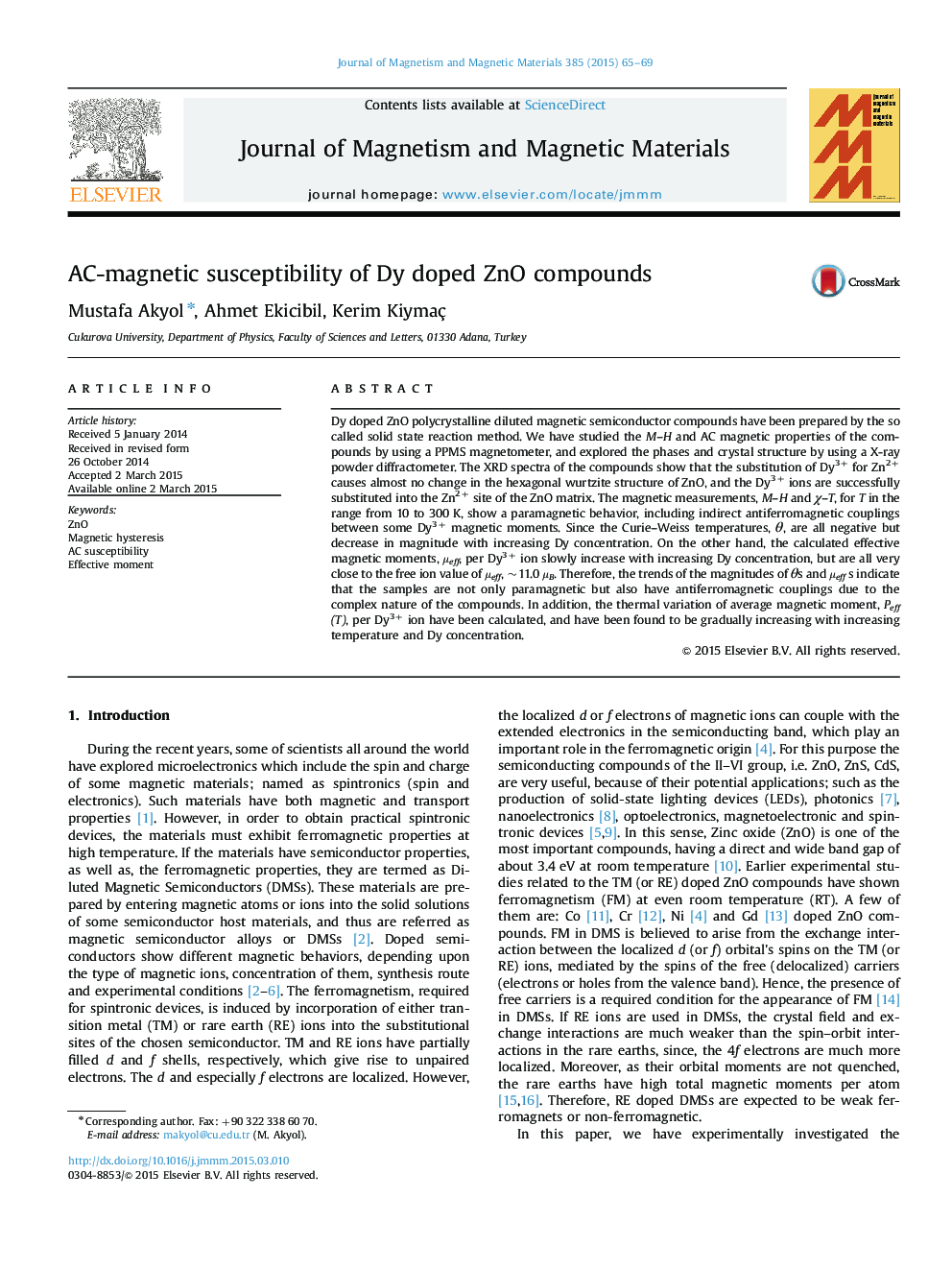| Article ID | Journal | Published Year | Pages | File Type |
|---|---|---|---|---|
| 1799119 | Journal of Magnetism and Magnetic Materials | 2015 | 5 Pages |
•The Dy doped ZnO samples in this work have showed a paramagnetic behavior.•The negative Curie–Weiss temperatures show antiferromagnetic interactions.•The effective magnetic moments per Dy close to the free ion value of ~11µB for Dy3+.
Dy doped ZnO polycrystalline diluted magnetic semiconductor compounds have been prepared by the so called solid state reaction method. We have studied the M–H and AC magnetic properties of the compounds by using a PPMS magnetometer, and explored the phases and crystal structure by using a X-ray powder diffractometer. The XRD spectra of the compounds show that the substitution of Dy3+ for Zn2+ causes almost no change in the hexagonal wurtzite structure of ZnO, and the Dy3+ ions are successfully substituted into the Zn2+ site of the ZnO matrix. The magnetic measurements, M–H and χ–T, for T in the range from 10 to 300 K, show a paramagnetic behavior, including indirect antiferromagnetic couplings between some Dy3+ magnetic moments. Since the Curie–Weiss temperatures, θ, are all negative but decrease in magnitude with increasing Dy concentration. On the other hand, the calculated effective magnetic moments, µeff, per Dy3+ ion slowly increase with increasing Dy concentration, but are all very close to the free ion value of µeff, ~11.0 µB. Therefore, the trends of the magnitudes of θs and µeff s indicate that the samples are not only paramagnetic but also have antiferromagnetic couplings due to the complex nature of the compounds. In addition, the thermal variation of average magnetic moment, Peff(T), per Dy3+ ion have been calculated, and have been found to be gradually increasing with increasing temperature and Dy concentration.
